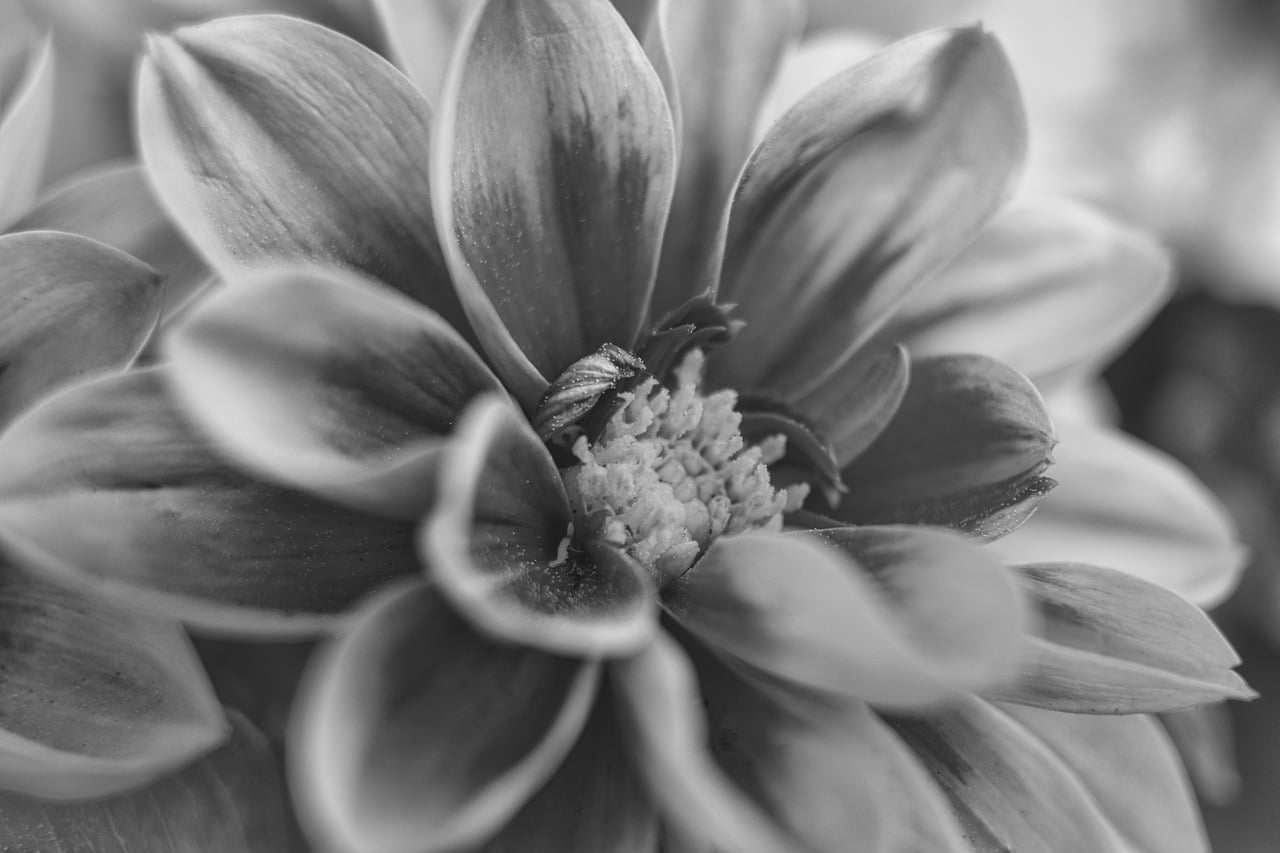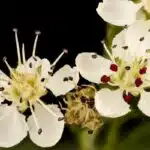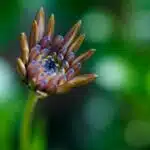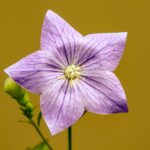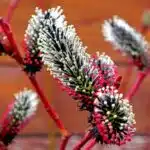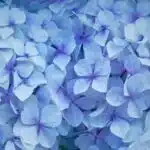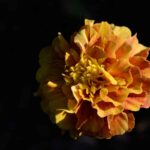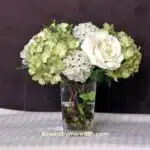The black Dahlia flower, also known as Dahlia Noir, has long captivated the hearts of flower enthusiasts, horticulturists, and poets with its enigmatic allure. Unlike the traditional dahlia, which is often associated with happiness, purity, and new beginnings, the black dahlia is a symbol of darkness, mystery, and the unknown. In this article, we will delve into the history, meaning, properties, and uses of the black dahlia flower, exploring its unique beauty and significance.
The Origin and History of Black Dahlia Flower
The origin of the black dahlia flower is shrouded in mystery, much like its name. While the traditional dahlia is native to Mexico, the black dahlia’s exact origins are unknown. Some speculate that it was first discovered in a remote corner of the Andes, while others suggest that it was cultivated by ancient Chinese herbalists for its medicinal properties.
The black dahlia first gained notoriety in the early 20th century, thanks in part to the infamous murder case of Elizabeth Short, who was nicknamed the “Black Dahlia.” Short was a young aspiring actress whose mutilated body was found in a vacant lot in Los Angeles in 1947. The media sensationalized the case, and the black dahlia flower became forever associated with the gruesome crime.
Despite its dark history, the black dahlia flower has continued to captivate the imagination of artists, writers, and gardeners around the world. Its distinctive color and velvety texture make it a popular choice for floral arrangements and garden displays, while its symbolism has inspired countless works of art and literature.
The Meaning and Symbolism of Black Dahlia Flower
The black dahlia flower is often associated with negative connotations, such as death, betrayal, and mystery. Its dark hue and velvety texture evoke a sense of foreboding and intrigue, making it a popular choice for gothic and horror-themed works of art and literature.
However, the black dahlia also has a more positive side, representing inner strength, resilience, and transformation. Its dark color is said to symbolize the hidden aspects of our personalities that we keep hidden from the world, while its velvety petals represent the softness and vulnerability that lies beneath.
In the language of flowers, the black dahlia can also convey messages of warning, farewell, and gratitude. Its stark beauty is often used to convey a sense of finality or closure, making it a popular choice for funeral arrangements and sympathy bouquets.
The Properties and Characteristics of Black Dahlia Flower
The black dahlia flower is a member of the Asteraceae family, which includes over 20,000 species of plants. Its scientific name, Dahlia pinnata, reflects its unique leaf shape, which resembles a feather or a fern. The black dahlia typically grows to a height of 2 to 4 feet and produces large, showy flowers that can range in color from deep red to almost black.
Like other members of the dahlia family, the black dahlia is a hardy perennial that thrives in well-drained soil and full sun. It is also relatively low maintenance, requiring little more than regular watering and occasional fertilization to thrive.
While the black dahlia is primarily grown for its ornamental value, it is also believed to have some medicinal properties. In traditional Chinese medicine, the dahlia root is used to treat conditions such as fever, inflammation, and pain. The plant is also believed to have anti-tumor and anti-inflammatory properties, although more research is needed to confirm these claims.
The Uses and Applications of Black Dahlia Flower
The black dahlia flower has a wide range of uses and applications, from decorative to medicinal. Here are some of the most common ways that the black dahlia is used:
1. Decorative Purposes
The black dahlia is often used for decorative purposes, both in floral arrangements and garden displays. Its unique color and texture make it a popular choice for gothic or noir-themed floral arrangements, while its dramatic beauty makes it a show-stopper in garden displays. The black dahlia can be grown as a cut flower or as a potted plant, making it a versatile addition to any indoor or outdoor space.
2. Symbolic Uses
The black dahlia is also frequently used for symbolic purposes, especially in works of art and literature. Its dark color and mysterious beauty make it a popular symbol of death, betrayal, and the unknown, while its softer qualities, such as resilience and transformation, make it a symbol of inner strength and perseverance.
3. Medicinal Uses
While more research is needed to confirm the medicinal properties of the black dahlia, some traditional medicine practitioners believe that it has a wide range of therapeutic uses. In traditional Chinese medicine, the dahlia root is used to treat a variety of conditions, including fever, inflammation, and pain. The plant is also believed to have anti-tumor and anti-inflammatory properties, although more research is needed to confirm these claims.
4. Culinary Uses
While not as common as its decorative or symbolic uses, the black dahlia is also used in some culinary applications. The young leaves and shoots of the plant can be eaten raw or cooked, and the tubers can be boiled or roasted and used as a substitute for potatoes. The petals of the flower are also edible and can be used to add color and flavor to salads or other dishes.
Growing and Caring for Black Dahlia Flower
If you’re interested in growing your own black dahlia, here are some tips to get you started:
1. Choose the Right Location
The black dahlia thrives in well-drained soil and full sun, so choose a location that receives at least six hours of direct sunlight per day. Make sure the soil is well-drained and free of weeds and debris.
2. Planting and Watering
Plant your black dahlia tubers in the spring, after the danger of frost has passed. Dig a hole that is slightly larger than the tuber, and place the tuber in the hole with the “eyes” facing up. Cover the tuber with soil, and water thoroughly. Water your black dahlia regularly throughout the growing season, keeping the soil moist but not waterlogged.
3. Fertilization and Maintenance
Fertilize your black dahlia every two to three weeks with a balanced, water-soluble fertilizer. Pinch back the tips of the plant when it reaches a height of 12 inches to promote branching and a fuller, bushier plant. Deadhead spent flowers to promote continued blooming throughout the growing season.
4. Overwintering
In colder climates, the black dahlia will need to be dug up and stored indoors over the winter months. Wait until the first frost has killed the foliage, then dig up the tubers and shake off any excess soil. Cut off any dead or damaged foliage, and store the tubers in a cool, dark place until the following spring.
Conclusion
The black dahlia flower may be shrouded in mystery and intrigue, but it is also a beautiful and versatile plant that can be enjoyed for a wide range of purposes. From its symbolic significance to its medicinal and culinary uses, the black dahlia is a fascinating and unique addition to any garden or floral display. While its origins may be unknown, its beauty and symbolism continue to inspire and captivate people around the world.
Whether you are a fan of gothic literature, a traditional medicine practitioner, or simply someone who appreciates the beauty of flowers, the black dahlia is sure to capture your imagination. With its rich history, distinctive beauty, and wide range of uses, the black dahlia flower is a plant that is truly worthy of our admiration and appreciation.

